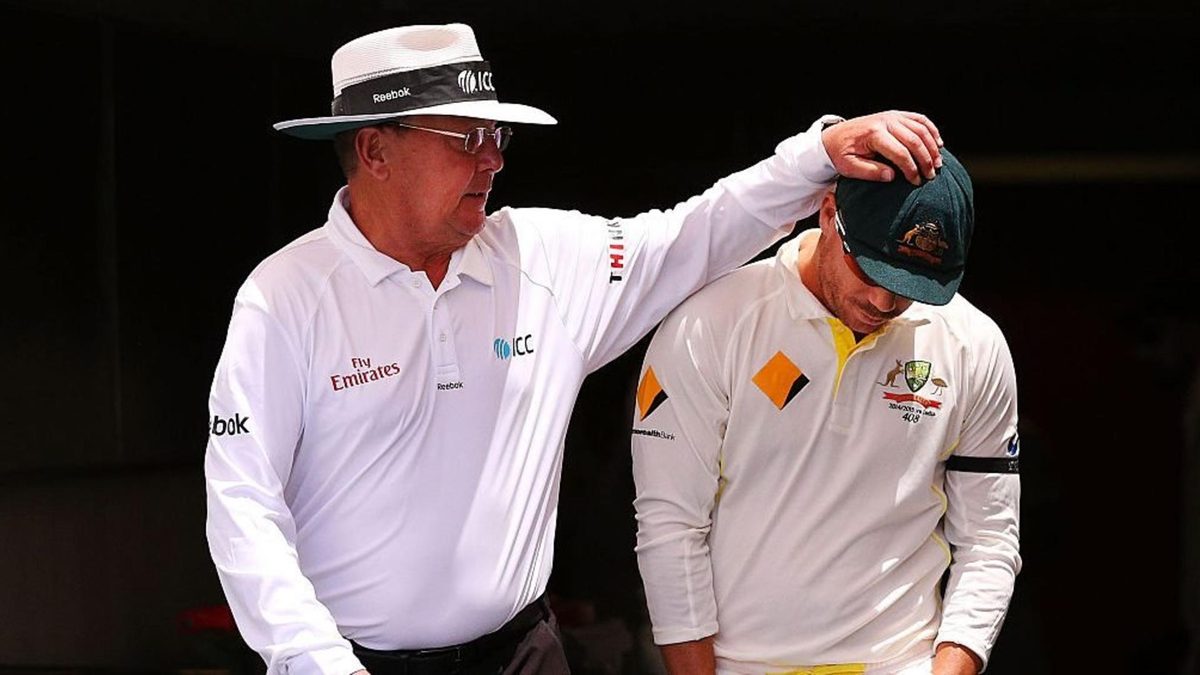
Jon Hotten, Wisden Cricket Monthly’s reviews editor, casts his critical eye over some of the month’s new reads, including Gunner: My Life In Cricket. For his ‘Books of the Month’, pick up the newest issue of WCM.
Many among us have taken that long-haul flight and found ourselves plonked next to someone who has a tale to tell. With the amount of air-miles clocked up by international umpires, a lucky few may have found that their travelling companion is Ian ‘Gunner’ Gould, who, after a lifetime in the game as player and then official, proves the most affable and loquacious company. His book Gunner: My Life In Cricket (Pitch Publishing) reads as unpretentiously as an in-flight chat, but is skilfully done by his ghost Bruce Talbot, who, along with Gould, has an eye for the detail that will bring life in the middle alive.
He begins almost at the end, sat in the third umpire’s chair at Newlands as Cameron Bancroft delves into his underpants for the world’s best-known sheet of sandpaper. Here is a new perspective as Gould views the raw camera footage and radios the on-field officials, talking them through what is happening like the control tower guiding a stricken aircraft. In the midst of it all comes a moment of great levity, when he is instructed by the ICC to reprimand Nathan Lyon for wearing black socks (who knew that white socks are mandated as part of the kit in Test matches… not me). Over the on-field microphone, Gould hears the following:
“Nathan, Gunner would like to know what colour socks you are wearing.”
“What the ****. Are you ****** kidding me? That takes the ******* biscuit. Tell Gunner he can **** off.”
“Not now my son. Please put some white socks on. Standards please!”
It’s the mark of someone both inside the story and with wit enough to tell it as it is. When, hours later, Bancroft creeps away from the Aussie dressing room to apologise to the umpires, Gould notes drolly: “We had realised from very early in proceedings that he wasn’t the brains behind the operation.” After the fireworks and the firings, the damp squib of a fourth Test “was like umpiring a schools match”.
Gould is brilliant too on the arcana of international officiating. There’s a great description of standing for Kagiso Rabada in the nets to get a feel for how he bowls, and the revelation that umpires have coaches, too. It’s a book filled with lovely and surprising detail, and love for the game. Terrific.
Pandemic or not, Pitch continue to publish a raft a new titles. Two of them, Ashley Gray’s Unforgiven and Colin Shindler’s Barbed Wire and Cucumber Sandwiches, are featured in this month’s issue of Wisden Cricket Monthly, and another, Mark Peel’s biography of Mike Brearley, Cricketing Caesar, will be in a future issue. Peel has also produced a history of England’s post-War captains, The Hollow Crown (Pitch). These are potted player profiles rather than a narrative biography, but useful for the library shelf.
Also out is Krijn Vrolijk and Jacob-Jan Esmeijer’s Windmills, Dykes & Wides (Colophon), a translated history of Dutch cricket told through 11 moments, beginning with an unlikely defeat of the 1964 Australians. The Aussies were, admittedly, somewhat off-colour, “many of them nursing a substantial hangover”, and upon the home victory, the scene is filled with celebrating locals, “dressed in cord trousers, shirt and tie, as if returning from church”.
There are some terrific moments, not least at the 2003 World Cup, where Dutch keeper Jeroen Smits takes the chance to chirp the great Tendulkar: “Let’s have him now… He doesn’t have a lot of footwork…” Despite the prosaic title, this is a little gem.
Mark Bridgeman’s Surviving In The Shadows is a self-published history of Breadalbane CC, nestled in highland Perthshire, where in the 1880s cricket flourished. For the clubmen of Scotland it will prove a nice keepsake (available via waterstones.com and amazon.co.uk).








